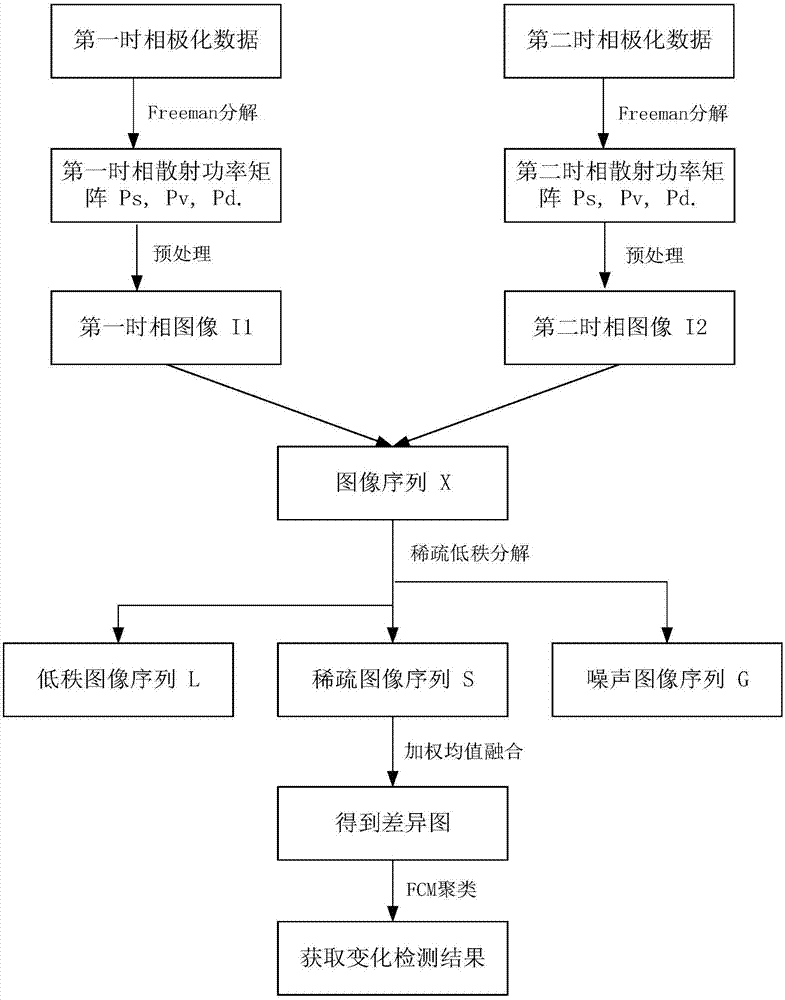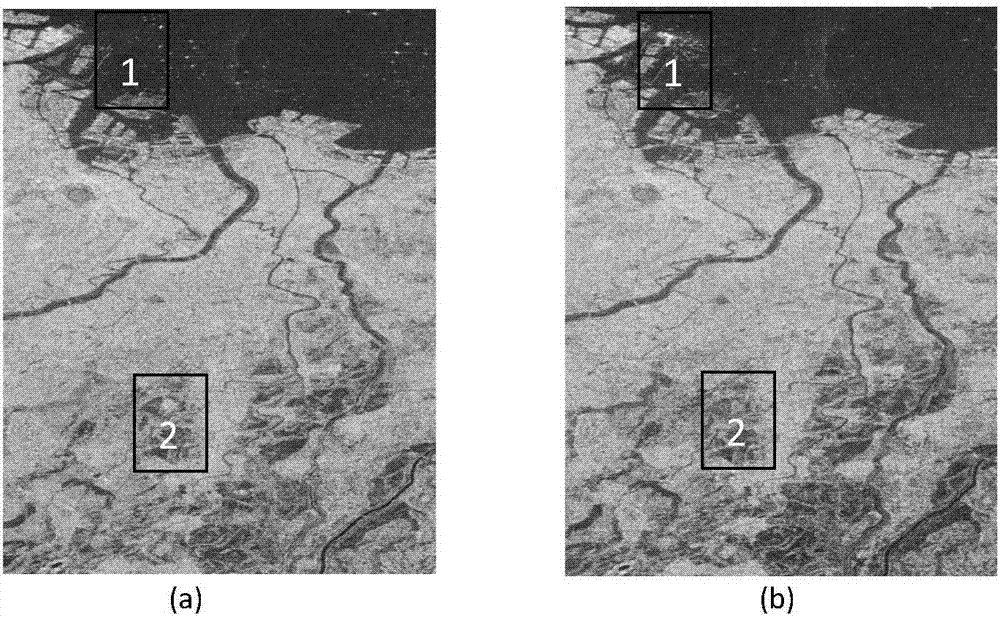Polarimetric SAR (synthetic aperture radar) change detection method based on scattering features and low-rank sparse model
A technology of change detection and scattering characteristics, applied in the field of image processing, can solve the problems of not considering noise, inaccurate detection results, and not using image space information, etc., to achieve the goal of improving accuracy, improving separability, and reducing missed detection rate Effect
- Summary
- Abstract
- Description
- Claims
- Application Information
AI Technical Summary
Problems solved by technology
Method used
Image
Examples
Embodiment Construction
[0028] Below in conjunction with accompanying drawing, embodiment of the present invention and effect are described further:
[0029] refer to figure 1 , the present invention is based on the scattering feature and low-rank sparse model polarization SAR change detection method, comprising the following steps:
[0030] Step 1: Extract the corresponding two-temporal coherence matrix from the two-temporal polarimetric SAR data.
[0031] This example uses the two-temporal polarimetric SAR data obtained from the airborne satellite ALOS, namely the first-phase polarimetric SAR data and the second-phase polarimetric SAR data;
[0032] 1a) extracting the first coherent matrix T1 from the first phase polarimetric SAR data;
[0033] 1b) Extracting the second coherent matrix T2 from the second time-phase polarimetric SAR data.
[0034] Step 2: According to the first coherent matrix T1 and the second coherent matrix T2, the input image I of the first time phase whose size is c=m×n is o...
PUM
 Login to View More
Login to View More Abstract
Description
Claims
Application Information
 Login to View More
Login to View More - R&D
- Intellectual Property
- Life Sciences
- Materials
- Tech Scout
- Unparalleled Data Quality
- Higher Quality Content
- 60% Fewer Hallucinations
Browse by: Latest US Patents, China's latest patents, Technical Efficacy Thesaurus, Application Domain, Technology Topic, Popular Technical Reports.
© 2025 PatSnap. All rights reserved.Legal|Privacy policy|Modern Slavery Act Transparency Statement|Sitemap|About US| Contact US: help@patsnap.com



